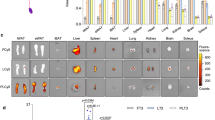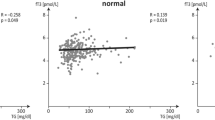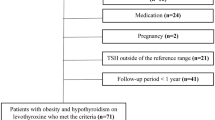Abstract
ABSTRACT: Preobese fetuses have elevated thyroid hormone levels and depressed growth hormone levels relative to lean fetuses. Therefore, we are studying various experimental fetal pig models to explore the relationship between endocrine status and onset of obesity. In the present study, intact and hypophysectomized (d 70) fetuses were implanted with thyroxine (T4) pellets on d 70 of gestation, and blood, adipose tissue, and skin samples were obtained upon removal of d 90 of gestation. Body weights were similar for all groups and T4 treatment reversed myxedema in hypophysectomized fetuses. Serum T4 levels were elevated (p < 0.05) and skin and hair development were enhanced (p < 0.05) to a similar degree by T4 treatment in intact and hypophysectomized fetuses. However, T4 did not influence adipose tissue development in intact fetuses, but markedly enhanced development in hypophysectomized fetuses. For instance, fat cell size and lipogenic enzyme activities in hypophysectomized fetuses were increased (p < 0.05) by 5-mg and 15-mg T4 treatments, with a marked increase (p < 0.05) in apparent fat cell number with the 15-mg T4 treatment. In contrast, there was no effect of T4 (15 mg) on these parameters in intact fetuses. Therefore, fetal obesity may be directly associated with elevated thyroid hormone levels and suppressed growth hormone levels, but not with elevated T4 levels alone.
Similar content being viewed by others
Log in or create a free account to read this content
Gain free access to this article, as well as selected content from this journal and more on nature.com
or
Author information
Authors and Affiliations
Rights and permissions
About this article
Cite this article
Hausman, G. The Influence of Thyroxine on the Differentiation of Adipose Tissue and Skin during Fetal Development. Pediatr Res 32, 204–211 (1992). https://doi.org/10.1203/00006450-199208000-00016
Received:
Accepted:
Issue date:
DOI: https://doi.org/10.1203/00006450-199208000-00016



